"The McCarthy Road follows the right-of-way of the old Copper River & Northwestern Railway. The McCarthy Road is recommended for those who like adventurous driving. Take your time on the McCarthy Road. We recommend slow speeds (5-10 mph) on sections of rough road, and no more than the posted speed limit - 35mph - on improved gravel and chipseal. Watch for sharp rocks, railroad spikes, no shoulders, narrow sections of road, soft spots, washboard, potholes and a few 'roller coaster' curves. Be sure to carry a fully-inflated spare, not a donut tire! Flats are more apt to happen after recent road grading, when small nails and spike are churned up."
First you read this in The Milepost. Then you see this sign...
What were we getting ourselves into??? A 60 mile adventure...
The first notable landmark was the Kuskulana Bridge. "This former railroad bridge (built in 1910) is 775 feet long and 238 feet above the river. It is a narrow, 1 lane, 3-span steel truss railway bridge, rehabilitated with wood decking and guardrails."
One thing they forgot to mention in the book was that sometimes railroad ties peek up out of the gravel in the road...
Then was the Gilahina Trestle. This mammoth wooden railroad trestle was built in the winter of 1911 in only 8 days. At 80-90 feet high and 880 feet long, it took over half-a-million board feet of timber brought in from the PNW. (There just isn't trees of this size anywhere close to McCarthy)
It was mind-boggling to consider as you stood underneath!
The road wasn't actually as bad as we (okay, me) had feared and was even better when driven closer to 30 than 15 mph.
But at an average speed of about 23 mph, it takes a LONG time to go 60 miles! Eventually we arrived at the end of the public road in McCarthy.
We parked our car and walked the half-mile to the footbridge across the Kennicott River to McCarthy...
Before the foot bridge was built in 1997, visitors had to haul themselves across the river in an open hand tram. There is a toll-bridge for the 100 summer-time and 15 year-round residents only. And it isn't cheap!
The Historical Museum was filled with brilliant vintage pictures of the area and lots of interesting facts about the community in its heyday...
While it was cute to look at, I have to confess that it was the first place we'd been that I didn't like. And I really didn't like it. It was like they took everything I don't like about Portland and moved it to this pristine location in the middle of nowhere in Alaska. They ruined it! Ugh!
Like everywhere in the North, they even had flowers at the ends of their bridge...
It was a darn good thing that they had a good place to eat with flushing toilets and beer! ;)
Kennicott, inside the Wrangell-St. Elias National Park, was another 5 miles away. We opted to take one of the many shuttle vans to the old copper mill.
We signed up for our mill tour and then wandered around the town a bit...
I think we found where they dumped all their garbage...
There was also a good view of the Root and Kennicott Glaciers and the morraine...
I wished we would have had time to hike out to the glacier. :(
The first stop on the tour was the manager's office, complete with a door from one of the upstairs' rooms straight into the mill...
We also got to see an old truck and a toilet... ;)
The view was spectacular from the top of the mill, 14 stories up!
Our tour followed the route from top to bottom that the copper ore did...
A lot of it involved small, dark and narrow places. It was so neat! It was fun to tour somewhere that you sort of felt like you really shouldn't be... :)
From 1911 to 1938, over $200 million of copper was mined and processed here. At its peak, 300 people worked in the mill town and another 200-300 in the mines. Kennicott had all the necessary services: school, hospital, store, skating rink, tennis court, recreation hall and dairy.
The entire town and mill water (not the mill, just the water) was heated by the ginormous boilers in this building. If you worked in the mill and got cold in the -40 degree winters, you just worked harder. One day the entire boiler building burned to the ground. Thankfully, all the boilers were covered in a thick layer of asbestos and were saved. They turned on back-ups, rebuilt the building and were up and running full steam ahead (get that pun??? LOL) again in only a week!
The copper was then put into burlap bags and loaded onto trains. You can still see the giant pile of bags left behind...
It was a good day but it was time to head back. It was a long, slow drive back to our camp in Chitina. Thank goodness it never gets dark!
We checked out a little restaurant right by where we parked our car. Turned out it was their Grand Opening Day! We had their beef sandwich and pasta salad with an Arnold Palmer to drink. I wish we had taken a picture. They were so proud and so excited about their new venture!
On the way back we saw a rainbow, a beaver den, and our very first moose! We were so excited! We didn't get great pictures (she was really far away and moved fast) but I love how you can see how tall and lanky they are...
Camp was a whole lot noisier when we got back thanks to a mess-load of new neighbors. We had dinner, ate some cookies, climbed into bed, put in some earplugs and went right to sleep...
Doors Off!
-
Last week I made cinnamon rolls as a special treat for breakfast. They were
special until smoke began pouring out of the back burner on the stove. I
guess ...
5 years ago




























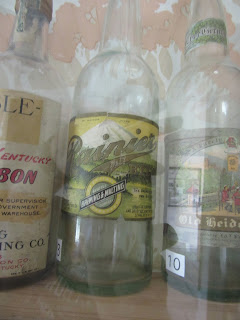




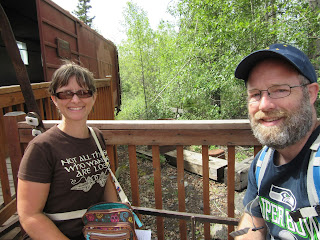














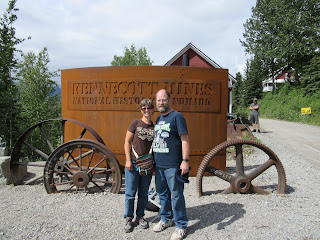







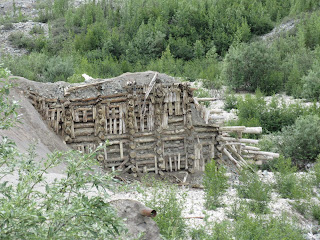























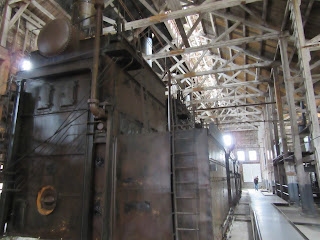











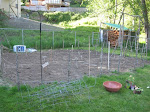
No comments:
Post a Comment